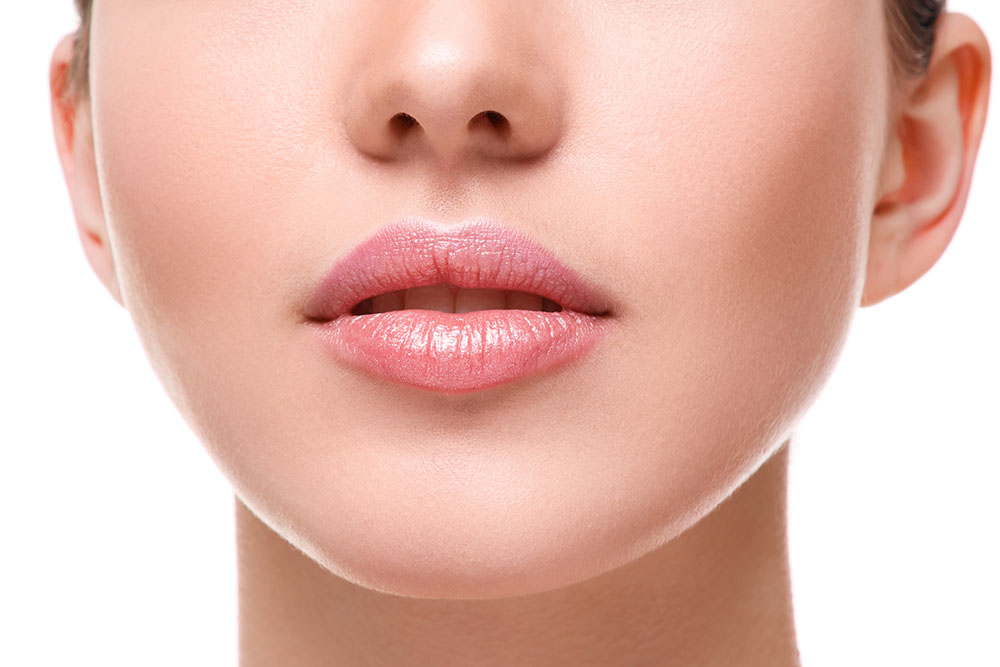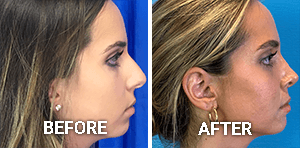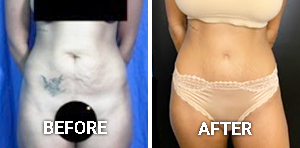Septoplasty
Conveniently located to serve the areas of Beverly Hills and Greater Los Angeles

Septoplasty is a functional rhinoplasty performed on patients with a deviated septum. The septum is the thin piece of cartilage that divides the nose into two separate nasal cavities. Its job is to direct airflow through the nose into the lungs, as well as provide support to the rest of the nasal structure. Our ability to breathe properly relies upon having a straight, well-aligned septum. A septum that is crooked is known as a deviated septum and can affect respiration and the appearance of the nose, which can appear asymmetrical as a result. This can be concerning and uncomfortable. Breathing problems, chronic sinusitis, nose bleeds, snoring, headaches, and sleep apnea frequently accompany a deviated septum. However, a septoplasty can help restore essential nasal function. And for those who also have concerns about the appearance of their nose, a septoplasty can be performed at the same time as a cosmetic rhinoplasty so that patients see an overall improvement to how they look and feel!
Dr. Michael Omidi is a leading plastic surgeon that performs cosmetic and reconstructive procedures in Beverly Hills. His vast experience in facial and nose surgery has provided countless patients results that have improved their well-being and overall quality of life. Contact our Beverly Hills office for a consultation to learn how you can correct a deviated septum and finally breathe more freely. Phone us at (310) 281-0155 or request an appointment online.
Contents
About
Ideally, the septum should be straight and bisect the mid-section of the nose. Sadly, this is not the case for many people. According to the American Academy of Otolaryngology-Head and Neck Surgery, an estimated 80% of people have some degree of deviation. Deviated septums can be a congenital deformity or acquired due to an accident or injury.[1] To correct this, a surgery known as a septoplasty is performed to straighten the septum. After incisions are made to expose the underlying cartilage, the deformity is removed, and the septum is reshaped, and repositioned. [2]
Benefits
Septoplasty provides patients suffering from a deviated septum much-needed relief. This helpful nasal surgery changes the inner framework of the nose to relieve breathing problems, other accompanying health issues, and can even improve the appearance of the nose. [1] After recovery, patients can anticipate:
Improved Breathing
Blocked nasal airflow may make you over-reliant on breathing through the mouth. However, prolonged mouth breathing can lead to dry mouth, bad breath, and other dental problems. By creating a more linear nasal passageway, you can look forward to better respiratory function and oral health.
Better Sleep
Better airflow can dramatically improve the quality of sleep you get every night. After a septoplasty, patients feel better rested, because they can sleep without disturbances. The many symptoms of poor sleep such as chronic fatigue, brain fog, and dark under-eye circles also improve. It can also help eliminate loud breathing or snoring and sleep apnea.
Less Frequent Sinus Infections
Unobstructed nasal passageways also mean that mucus can drain properly from the sinuses. A deviated septum can create a blockage that keeps this from happening, allowing bacteria to grow and cause chronic sinus infections.
Candidates
A septoplasty gives patients an effective, long-term solution to the uncomfortable symptoms that result from a deviated septum. A consultation with Dr. Michael Omidi will allow him to evaluate your symptoms and determine if you will benefit from the procedure.
Patients who are Suitable Candidates for a Septoplasty
- Do not smoke or are willing to stop until fully recovered
- Have trouble breathing caused by uneven nasal passageways
- Experiencing sleep apnea or snoring during the night
- Have chronic or persistent nosebleeds
- Are not involved in cocaine [1] or other intranasal drug use
- Are not seeing improvement with nasal sprays, humidifiers, or antihistamines
Personal Consultation with Dr. Omidi
Michael Omidi, M.D., F.A.C.S. is a Beverly Hills-based plastic surgeon that has been helping patients look and feel their very best for over 15 years. His surgical finesse and vast knowledge allow him to create exceptional results while maintaining a high level of patient satisfaction.
Your personal consultation is your chance to discuss your symptoms and concerns and determine whether a septoplasty is right for you. This will include an overall assessment of your health, so please be open and frank about your symptoms, allergies, illnesses, and past surgeries. Then, he’ll examine your nasal structures to detect any abnormalities. If he determines that a deviated septum is the cause of your concerns, and that you are a good candidate for a septoplasty, he’ll devise a personalized treatment plan. Dr. Omidi will explain the steps of the procedure, and the results you can expect once you’ve recovered from surgery.
There’s no reason to suffer from obstructed airways. Make an appointment to meet with Dr. Omidi at his office in Beverly Hills. Call us at (310) 281-0155 to schedule your consultation, or use the online contact form.
Preparation
We’ll prepare you for surgery by supplying you with a list of general instructions to follow before coming into the office. Dr. Omidi will instruct patients to:
- Avoid smoking: Nicotine decreases blood flow and inhibits your ability to heal.
- Adjust medication: Certain prescriptions and over-the-counter medications can increase the risk of bleeding, so be sure to provide the office with a full list of all your medications and adjust your intake as advised.
- Visit the drug store: Go to your local pharmacy and pick up the prescriptions ordered by Dr. Omidi for your recovery.
- Take time off: Talk with your boss and take a few days off to recover.
- Arrange for a ride home: Coordinate with a friend or loved one to pick you up after surgery.
Procedure
Your septoplasty treatment is performed as an outpatient procedure, so you will be free to go home after treatment. Depending on your specific case, your surgery can last up to three hours. After you’re settled, we’ll administer local or general anesthesia to optimize your comfort. Once it has taken effect, Dr. Omidi will perform the procedure from inside the nasal passageway, using a special speculum to allow him access through the nostril. For more extensive revisions or if another rhinoplasty procedure is being performed, a small incision is made across the columella, the small strip of tissue that separates nostrils. This is referred to as an open rhinoplasty technique.[3] Then, incisions are made in the mucosal lining covering the septum’s surface. This is carefully lifted away, exposing the septal cartilage. Once this happens, corrections to the septum will begin. Deviated septa are often bowed, and so surgeons often remove small portions to reduce the length of the septum, allowing it to straighten out in the nasal cavity. Removed septal cartilage can then be used to reinforce other parts of the nose’s internal structure. [2][4] While performing this surgery, Dr. Omidi will leave enough healthy bone and cartilage to maintain an optimal nasal shape. Once the revisions are complete and the straightened septum is secured in place, he will replace the lining and close any remaining incisions with sutures. Finally, he will secure your results with dressings and a splint, which will be taken off at your follow-up appointment.
Recovery
Once the lingering effects of the anesthesia wear off, patients can expect to experience some discomfort, but this can be managed with the pain medication that Dr. Omidi has prescribed. Bruising and swelling around the nose and under the eyes are also normal after a septoplasty. Resting on your back with your head elevated will help with the swelling. Patients are advised not to blow their noses or place unnecessary pressure on the area throughout their recovery. You’ll be given instructions to help care for your healing nose and to ensure you have an optimal recovery. Light activity, including work, can be resumed when you feel ready, typically in a few days. However, wait another 4-6 weeks before continuing strenuous activity such as exercise.
Results
Your post-surgical symptoms should improve over the next month or two, and in 3-6 months the bone, cartilage and nasal tissue will have fully healed. As your nose continues to heal, you will notice that it will become much easier to breathe and sleep, and you’ll notice an overall improvement in how you feel.
Corresponding & Complementary Procedures
Chronic snoring or sleep apnea isn’t always caused by a deviated septum. It can also be caused by excessive tissue in the throat. A uvulopalatopharyngoplasty, or UPPP, utilizes a fractionated CO2 laser to safely remove this excess tissue and unblock obstructed airways.
How Much Does a Septoplasty Cost in Beverly Hills?
Septoplasty patients can count on a personalized treatment designed to address their concerns. Consequently, the final pricing for a septoplasty will vary slightly from patient to patient, depending on the details of their procedure. Your health insurance may cover your septoplasty surgery. Please consult with them to determine your coverage. Patients can also browse our financial page for more information about funding their procedure.
FAQ
What is the difference between a rhinoplasty and septoplasty treatment?
A rhinoplasty is a nasal surgery, and rhinoplasties are either functional, cosmetic, or both. A septoplasty is considered a functional rhinoplasty, and it improves breathing. Cosmetic rhinoplasties alter the inner structure of the nose to change its aesthetics.
Does septoplasty cure snoring?
A septoplasty is a treatment that corrects the nasal septum to unblock airways and improve breathing. After a septoplasty, patients can experience a significant improvement in snoring and sleeping patterns. However, there are many reasons patients snore, and the procedure may not eliminate snoring for all patients.
References
- Manjunatha RG, Rajanna K, Mahapatra RD, Dorasala S. Piezoelectric Sensing: Evaluation for Clinical Investigation of Deviated Nasal Septum. Allergy & Rhinology. 2013;4(3):ar.2013.4.0066. doi:10.2500/ar.2013.4.0066
- Watters, C., Brar, S., & Yapa, S. (2021). Septoplasty. PubMed; StatPearls Publishing. https://www.ncbi.nlm.nih.gov/books/NBK567718/
- Fettman, N., Sanford, T., & Sindwani, R. (2009). Surgical Management of the Deviated Septum: Techniques in Septoplasty. Otolaryngologic Clinics of North America, 42(2), 241–252. https://doi.org/10.1016/j.otc.2009.01.005
- P. Most, S., & F Rudy, S. (2017). Septoplasty: Basic and Advanced Techniques. Facial Plastic Surgery Clinics of North America, 25(2), 161–169. https://doi.org/10.1016/j.fsc.2016.12.002





